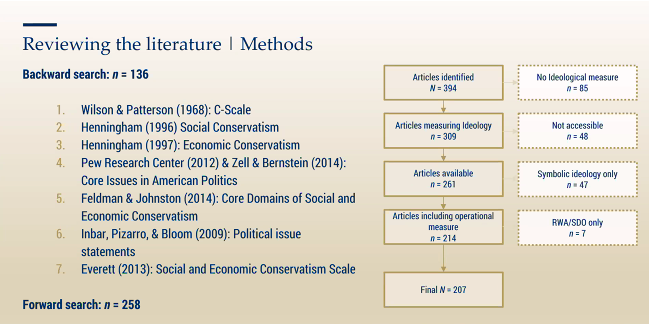#MPOSS is back! Today's presentation features "Measuring ideology: Current practices, its consequences, and recommendations" by @Flavio_Azevedo_
Join us at 12pm EST!
Register here: https://msu.zoom.us/webinar/register/WN_xxX4ir93SuykJGL4ze3eRQ
Join us at 12pm EST!
Register here: https://msu.zoom.us/webinar/register/WN_xxX4ir93SuykJGL4ze3eRQ
Ideology is measured in numerous disciplines. It's routine practice to measure ideology on 1 scale. However, this raises the question of how researchers measure, study, and use ideology even when it is not the main variable. Here is @Flavio_Azevedo_'s principal claim.
@Flavio_Azevedo_ predicts that there is high heterogeneity in ideological instruments, content, and measurement practices. Flavio also predicts that substantive findings change a a function of ideological measure. #MPOSS
Indicators of heterogeneity include a high number of unique, non-validated, on-the-fly measures, and non-conformity within measures. There are also several indicators of quality. #MPOSS
@Flavio_Azevedo_ focuses on operational ideology. The final sample included 207 articles.
Each color hue (in image 3) is a unique scale. From 207 coded papers, there were 152 distinct measures of ideology. There were also 43 unnamed measures. #MPOSS
Each color hue (in image 3) is a unique scale. From 207 coded papers, there were 152 distinct measures of ideology. There were also 43 unnamed measures. #MPOSS
Here is the trend over time and results by publication outlet.
The prevalence of heterogeneity and questionable measurement practices arises in several fields. #MPOSS
The prevalence of heterogeneity and questionable measurement practices arises in several fields. #MPOSS
The table displays the Jaccard Index for 10 ideological instruments. The second image displays the co-occurence of issue positions. #MPOSS
Content overlap between ideological scales is minimal, and there is substantial heterogeneity even within the most used ideological instrument - the W&P C-Scale. #MPOSS
To what extent does it matter that we have this variability? Does it matter practically? Are ideological instruments interchangeable? Here is the study design:
#MPOSS @Flavio_Azevedo_
#MPOSS @Flavio_Azevedo_
Case study 2 examines the claim "Americans are not (yet) ideologically polarized (via divergence)." @Flavio_Azevedo_ finds that, once again, depending on the scale you use, you would arrive at a different conclusion. #MPOSS
Case study 3 examines the claim "Ideology predicts distrust in climate change far and above other variables." #MPOSS @Flavio_Azevedo_
Case study 4 examines the claim "Libertarians compose 3.8 percent of the American electorate." #MPOSS @Flavio_Azevedo_
The main takeaway from @Flavio_Azevedo_'s research is that we have been conducting research on ideology as if we were all using a standardized measure, but we are not! This poses a threat to the replicability and generalizability of ideological research. #MPOSS
Among several possible solutions, @Flavio_Azevedo_ recommends an institutional push towards a standardized measure or a set of standardized measures that are regularly updated. #MPOSS

 Read on Twitter
Read on Twitter































